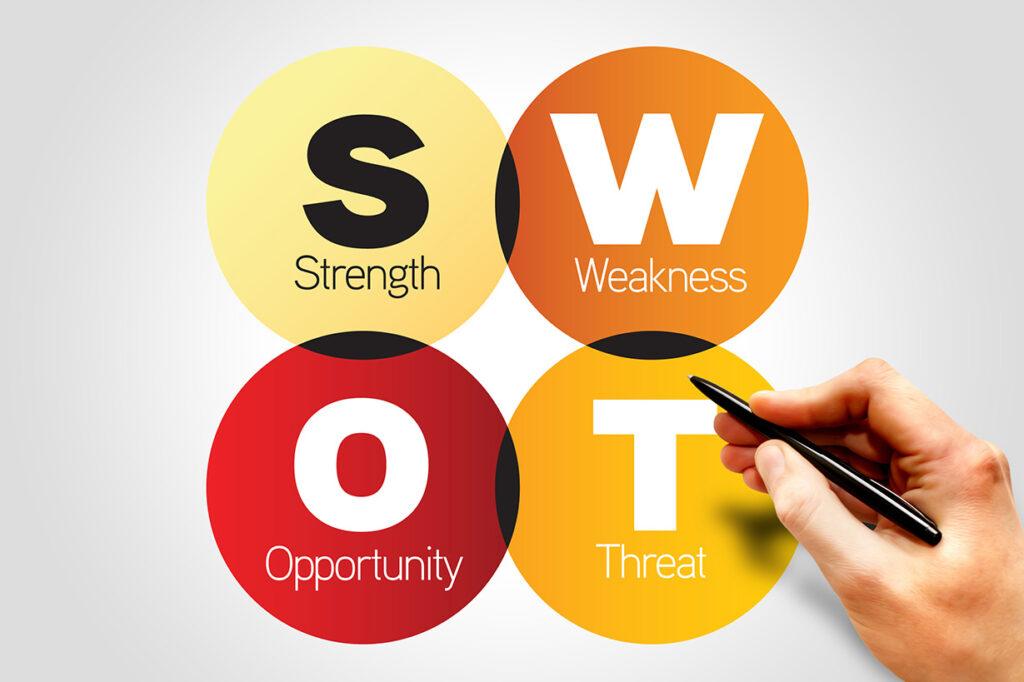

Having facilitated countless SWOTs over the past 15 years, I have found certain best practices to keep in mind. SWOTS are like a 360 process for your business and to do them effectively, you must get buy-in, get a wide range of feedback and translate it into action.
- Define your objective: First, clearly identify the purpose for conducting the SWOT analysis. Is this to help clarify annual strategic objectives for the entire organization, a specific department, etc. ?
- Gather feedback: A common misstep I see organizations make is not collecting feedback (“inputs”) about your company, service or products. This feedback be gathered through multiple sources: via customers, channel partners, employees, volunteers, Board members and other stakeholders. This pre-SWOT work is time consuming however provides more comprehensive objectivity.
- Prioritize and categorize: When working through each of the SWOT domains, categorize any themes and begin to prioritize them.
- Don’t forget PESTLE: PESTLE is an acronym for looking specifically at the threats domain (Political, Economic, Social, Technological, Legal, Environmental). PESTLE is incredibly helpful in assessing risk, evaluating trends and planning for possible disruptions. Whether a global pandemic or emerging technologies like AI, organizations need to anticipate, plan and allocate resource for these possible forces.
- SWOT Summary: The SWOT should ideally result in a one page distilled summary of priorities and action steps that you then move to the rollout and implementation phases of overall strategic planning.
If your organization needs assistance with facilitating an effective SWOT analysis, please contact me.
